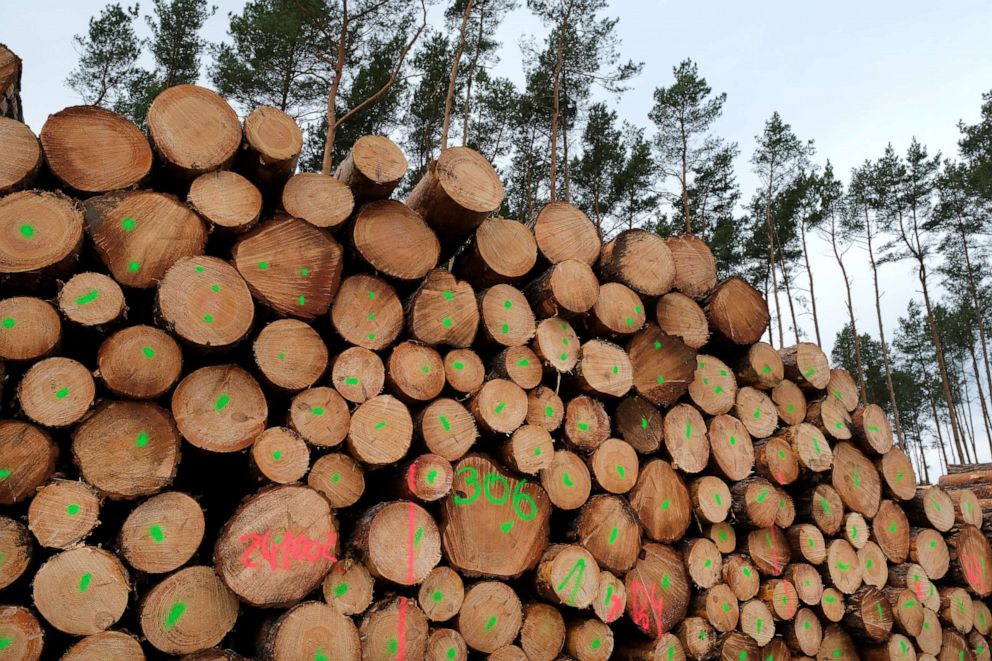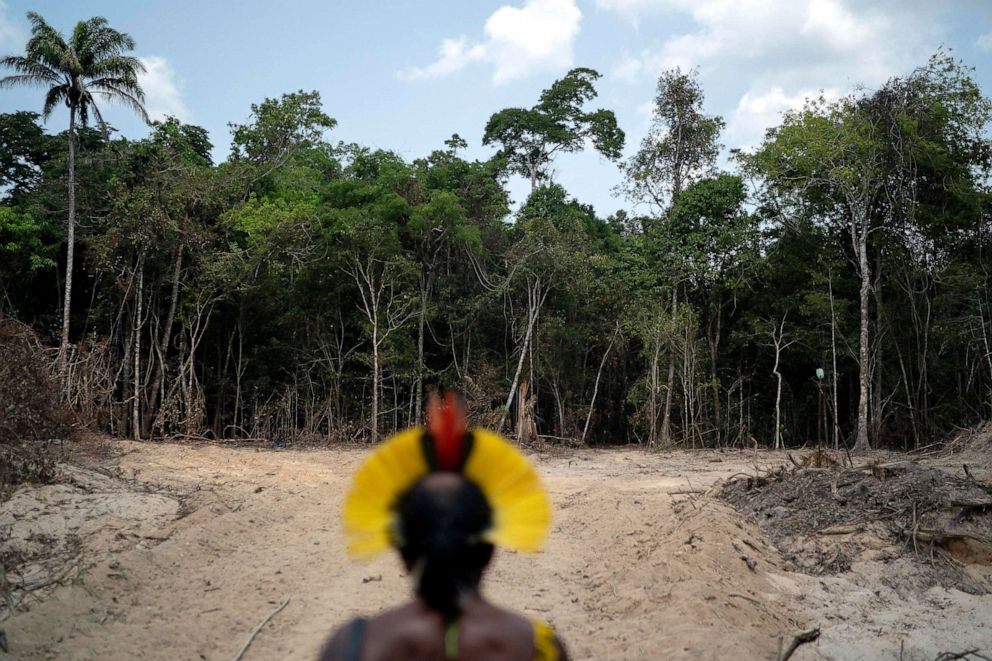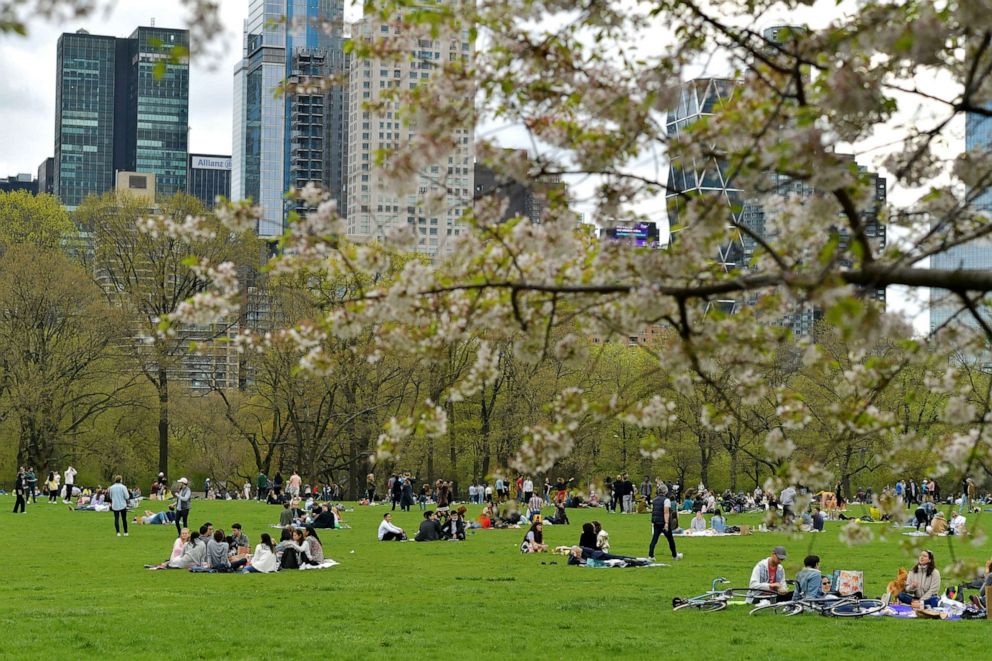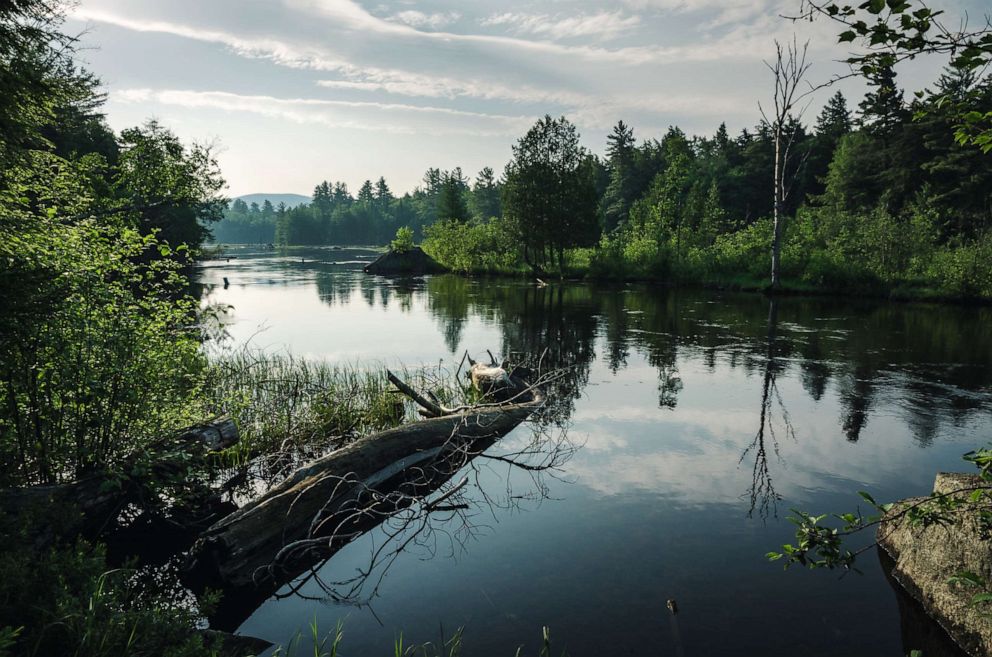Earth Day 2021: Why reforestation is a crucial part of saving the environment
Planting trees is as beneficial as they say it is.
Climate change may be the focus of the environmental movement, but restoring the Earth, the theme of this year's Earth Day, will play a crucial role in keeping global temperatures down.
The theme "focuses on natural processes, emerging green technologies, and innovative thinking that can restore the world’s ecosystems," according to the Earth Day Network. Every year, more than 18 million acres of forests are lost, according to the organization.
Re-planting the forests of the planet, which have been cleared in vast amounts to make room for homes, transportation and agriculture, chopped down for timber and scorched by wildfires, will aid in getting Earth back to its equilibrium in more ways than mitigating climate change, experts told ABC News.

Forests are essential to life on Earth
Forests and the benefits they provide are of critical ecological importance to the environment, Owen Burney, director of New Mexico State University's Forestry Research Center, told ABC News. They can alter the quality and quantity of drinking water. They capture and store carbon dioxide out of the atmosphere. They provide the most habitat for Earth's terrestrial species. And they provide irreplaceable recreational opportunities for humans.
"That list goes on and on," Burney said, adding that in New Mexico alone, forests supply up to 75% of all the water used by municipalities and agriculture. Most of the drinking water in the country comes from forested landscapes, said Brian Kittler, director of forest restoration for American Forest, a nonprofit that aims to protect and restore healthy forest ecosystems.

Reforestation is the top nature-based climate solution in the U.S., Kittler told ABC News. Solomon Dobrowski, professor of landscape ecology at the University of Montana, believes that forests play a "pivotal role" in finding solutions for biodiversity and climate change.
"Those are two of the largest challenges we face as a planet," Dobrowski told ABC News.
A population rebound of wildlife is already evident on the West Coast where nonprofit One Tree Planted has planned to plant 1 million trees from California to Oregon and Washington State, Matt Hill, president of the organization, told ABC News.
The domino effect began with the shade from the trees helping to cool and clean waterways, which has increased the presence of salmon and now the endangered Orca whales that eat them in the Pacific Northwest, Hill said.
It is essential to re-plant after wildfires
Wildfires in recent years have devastated enormous areas of land all over the world. Each year, wildfires in Brazil threaten more and more of its tropical rainforest. The bush fires that began blazing through Australia's east coast in late 2019 either killed or displaced nearly 3 billion animals. The wildfires on the West Coast last year, record-breaking in several states, scorched millions of acres in California alone.
The most effective solution would be to prevent wildfires from sparking in the first place, especially by protecting and managing existing forests properly to ensure the fuel load is not there, Burney said.

Re-planting trees in the land that was lost will help ensure the fires do not spread or burn so intensely the next time around. The soil provides moisture. Planting trees in clusters of "islands" with open areas in between will help limit a rapid spread as well, Burney said.
"If we begin to lose our forests, which we are because due to catastrophic events like wildfires, and we're not replanting, we are losing all those valuable resources," Burney said.
Why trees are so important in urban cities
Concrete jungles have been cleared of their natural landscape and vegetation, so what's the point of replanting them?
There are about 20 million acres of land in the U.S. that can be reforested as urban forests, Kittler said. But while planting trees in urban areas will not make much of a dent in storing carbon, the trees serve a different purpose, Burney said.
With all the asphalt, metal and car exhaust, these cities tend to trap in heat, which then evaporates the moisture from water and increases temperatures even more. The tree canopies or "sun umbrellas" provide shade, reflect the sunlight and prevent more heat from getting trapped in, which then improves the air quality. The trees also intercept noise pollution as well as dust and any other types of particles.

The holistic benefits of trees are even more important in a setting where there are so few, the experts said. In New York City, Central Park and the dozens of other parks throughout the five boroughs serve as an aesthetically pleasing place for people to congregate to.
Parks also help to foster the community by providing a retreat for residents and opportunities for volunteers to come together to care for them, Hill said.
"And so trees can be a big part of basically improving conditions for residents in cities," Dobrowski said.
Once land has been shifted to an urban landscape, it likely will never be a forest again, Burney said.
"If it becomes a road, good chance it's gonna stay a road," he said.
This is why One Tree Planted is looking to plant "random forests" in large urban areas such as Philadelphia, Detroit and New York City, in addition to its projects throughout the country, Hill said.
Lawmakers need to be smarter about zoning laws to achieve this, Burney said.
The socioeconomic impact of trees
The beautification aspect of living with trees nearby may offer a glimpse into the social divide and who gets to enjoy those views.
There is not an equitable distribution across all income brackets of an urban tree canopy, Kittler said.
Tree equity in cities is one of the issues the organization is trying to tackle because the urban heat island will continue to increase as the planet warms, Kittler said. The heat island is essentially a bubble of increased heat over an area resulting from the absorption from the radiation from the sun that is remitted at night, Dobrowski said.
"So having that shade is really, really important for people in cities, and if you look at a map of urban tree canopy in American cities, it correlates pretty well to income and actually race as well," Kittler said.
Areas with more mature trees and parks tend to be in the neighborhoods with high home values, which creates a number of public health implications, Kittler said. Taking shelter under the shade of a tree for some respite from the heat is "an irreplaceable service that trees provide," he said, but there also tends to be less pollutants in areas with more tree canopy, and higher electricity bills in those without.
Another benefit of large-scale tree-planting projects is that it creates jobs, Hill said. Sustainable management of forests could create $230 billion in business opportunities and 16 million jobs worldwide by 2030, the World Economic Forum's 2020 report on The Future of Nature and Business found.
What can be done
Building brand new forests provides scientists with an opportunity to approach the replanting strategically, Burney said, describing the process as "climate-smart reforestation."
Researchers have taken the idea of assisted migration -- for example, planting a species of tree that is native to the area but sourcing the seed from a little farther south -- to ensure that the forest will endure.
The reasoning is that, genetically, the seed source picked from the south will have evolved to withstand higher, drier temperatures, therefore giving the new forest the ability to withstand more heat as global temperatures continue to rise. It also ensures that the new plants do not utilize water too quickly, which could then create an overgrowth and provide fuel for any flames that may come through.
To really "drive climate change in the right direction," it will be necessary to plant trees "on a very large scale" -- to the tunes of "millions and millions of trees over millions and millions of acres -- to aid in the sequestration of carbon, Burney said. American Forest especially focuses on areas where a natural regeneration is unlikely, such as a forest completely destroyed by wildfire or a severe disease or insect event, Kittler said.
But the distribution of these forests needs to be strategic as well, Kittler said, adding that no one is suggesting to put forests in places like the Serengeti Plain, a savanna in Tanzania.

Efforts can be made on an individual level as well.
While donations are great, what is needed most is volunteers to get their hands dirty at tree-planting events, Hill said.
"When you plant a tree anywhere, it's having an overall benefit in so many ways -- soil quality, air quality, helping with the local biodiversity," Hill said.
Kittler described planting a tree as a "hopeful act" that is difficult to maintain.
"Caring for that tree for a long time, as it matures and grows, it's sort of an active, inactive commitment and an act of love," Kittler said.
Last year, the World Economic Forum launched an initiative to plant 1 trillion trees by 2030.
Burney would argue that every country in the world, even those that are well developed and well resourced, needs a level of reforestation beyond what is already been done. But it will take support from private industry to accomplish what needs to be done, and the fight needs to start now, he said.
"If we don't do it, the repercussions are huge. It's going to affect everyone," Burney said. "You think climate change is a big issue? What if we run out of water?"






